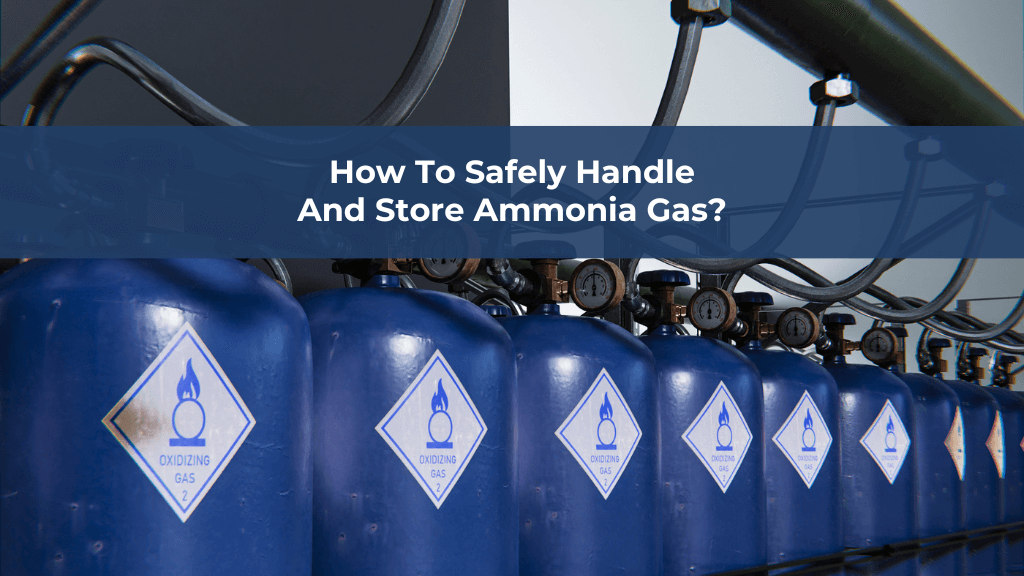Ammonia is a colorless gas that has a strong, pungent odor. It is widely used in various industrial, household, and agricultural applications. It is crucial to handle and store Ammonia Gas safely to avoid any hazardous situations. This article aims to provide a comprehensive guide on how to handle and store Ammonia Gas safely.
Properties of Ammonia Gas
Ammonia gas is a compound of nitrogen and hydrogen, with the chemical formula NH3. It is highly soluble in water, making it easy to transport in liquid form. Ammonia gas is lighter than air, which means that it rises in the atmosphere and can quickly spread in case of a leak. This gas is highly flammable and explosive, and it can cause severe health problems if inhaled.
Uses of Ammonia Gas
Ammonia gas has a wide range of uses, including industrial applications such as refrigeration, cleaning agents, and fertilizers. It is also used as a household cleaner and as an agricultural fertilizer.
Types of Ammonia Storage Tanks
Ammonia can be stored in either steel or plastic storage tanks. Steel storage tanks are durable and can withstand harsh weather conditions, but they are expensive and heavy. Plastic storage tanks are lightweight and less expensive, but they are not as durable as steel tanks. It is important to choose the right type of storage tank based on the specific requirements.
Safety Measures for Handling Ammonia Gas
When handling Ammonia Gas, it is important to wear personal protective equipment, such as gloves, goggles, and a mask. Observing safety procedures and having an emergency plan are crucial. If you are exposed to Ammonia Gas, it is important to seek immediate medical attention and to follow first aid measures.
Regulations for Ammonia Storage and Handling
In India, there are regulations set by the government for the storage and handling of Ammonia Gas. These regulations ensure the safe transportation, storage, and handling of the gas. To ensure the safety of the public and the environment, it is necessary to comply with the global regulations set by the International Maritime Organization (IMO) and United Nations (UN).
Maintenance of Ammonia Storage Tanks
Regular inspections, repairs, and replacements are important to ensure the proper functioning of Ammonia storage tanks. This includes checking for leaks, cracks, and other signs of damage. Proper maintenance can help prevent accidents and ensure the safe storage of Ammonia Gas.
Best Practices for Safe Ammonia Storage and Handling
Proper labeling and signage, proper ventilation, and emergency response planning are some of the best practices for safe Ammonia storage and handling. It is important to educate employees and workers about the dangers of Ammonia Gas and to provide them with proper training on how to handle and store the gas safely.
Conclusion
In conclusion, safe handling and storage of Ammonia Gas is crucial to prevent accidents and to ensure the safety of the public and the environment. By following the regulations, safety measures, and best practices outlined in this article, you can help ensure the safe handling and storage of Ammonia Gas.
FAQs
1. What is Ammonia Gas?
A. Ammonia Gas is a colorless gas that has a strong, pungent odor and is composed of nitrogen and hydrogen.
2. What are the hazards associated with Ammonia Gas?
A. Ammonia Gas is highly flammable and explosive, and it can cause severe health problems if inhaled.
3. How is Ammonia Gas stored?
A. Ammonia Gas can be stored in either steel or plastic storage tanks we can’t store ammonia gas in plastic tanks, only in metallic containers.
4. What are the safety measures for handling Ammonia Gas?
A. When handling Ammonia Gas, it is important to wear personal protective equipment and to follow safety procedures. If exposed to the gas, seek immediate medical attention and follow first aid measures.
5. What are the regulations for Ammonia Storage and Handling in India?
A. There are regulations set by the Indian government for the storage and handling of Ammonia Gas to ensure the safe transportation, storage, and handling of the gas.














